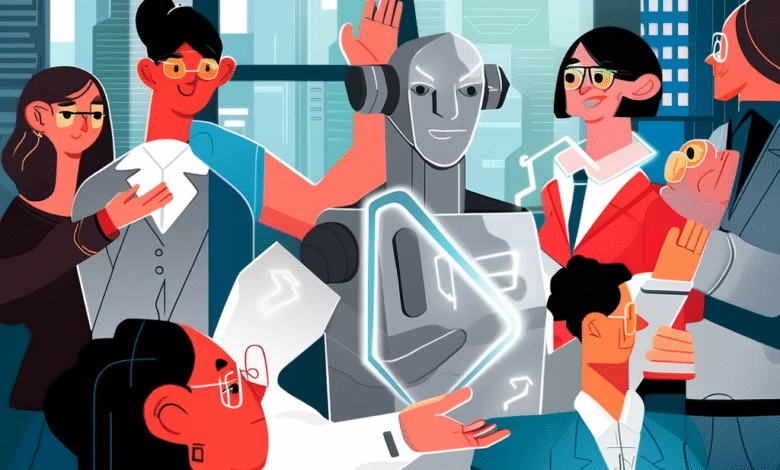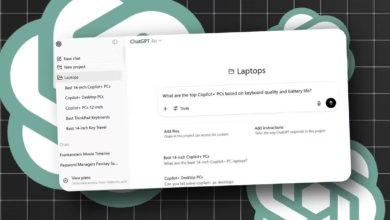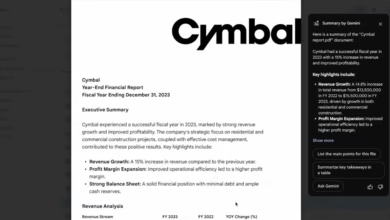Your New AI Coworker Is Here. Getting Along Is Complicated.

The familiar buzz of the office has changed. The sound of distant servers has been joined by the quiet processing of an AI summarizing your last meeting, drafting your follow-up emails, or analyzing sales data in real-time. In 2025, artificial intelligence has moved from a niche tool for data scientists into the role of an active, and sometimes awkward, collaborator for everyone. This shift is reshaping productivity while forcing a complex negotiation between human instinct and machine logic.
A New Productivity Engine
The promise that AI would handle tedious work is finally taking concrete form. The goal is to move professionals from what Microsoft CEO Satya Nadella calls “autopilot” work to “copilot” work, where human creativity is augmented.
This is highly visible in marketing, where Coca-Cola launched its “Create Real Magic” platform. The system uses OpenAI’s GPT-4 and DALL-E models to allow digital artists to generate original ad campaign assets using iconic elements from Coca-Cola’s archives. This process, which led to a 6% rise in net revenue in the quarter after its launch, turns a lengthy creative cycle into a rapid, iterative collaboration. Similarly, in logistics, DHL employs AI to optimize delivery routes on the fly, accounting for traffic and weather patterns with a precision humans can’t match. The result is a measurable uptick in efficiency, allowing people to focus on strategy and client relationships.
The Human Factor
Yet, integrating an AI into the team isn’t a simple plug-and-play operation. The introduction of these powerful tools has created a current of unease. The core of the issue lies in what Ethan Mollick, a professor at the Wharton School, calls AI’s “jagged frontier”, its inconsistent capabilities.
This creates a new layer of cognitive load on employees. The required skill has shifted from simply performing a task to managing an AI assistant. This involves learning how to write effective prompts and critically vetting the AI’s output. When an AI handles creative tasks, it can also impact job satisfaction. A recent MIT study of scientists using AI to help develop new chemical compounds found that while productivity rose, 82% of the researchers reported lower job satisfaction. They cited underutilization of their skills and reduced creativity, feeling their role had shifted from inventor to a “quality checker for AI-generated ideas.”
When the Algorithm Is Your Manager
The tension becomes more pronounced when AI moves into management roles. The most well-known and controversial example comes from Amazon’s warehouses. The company uses a sophisticated algorithmic system, internally called ADAPT (Associate Development and Performance Tracker), that monitors each worker’s productivity. It tracks metrics like “time off task,” automatically generating warnings, and in some cases, termination notices, for those who fail to meet algorithmically defined quotas, with little to no human manager intervention.
While proponents argue this creates an objective standard, many workers report feeling dehumanized and constantly surveilled. This “trust deficit” stems from our inherent need for social context in evaluation. Feedback from a human, even if critical, comes with the potential for dialogue. Algorithmic feedback, stripped of this social wrapper, can feel hollow and authoritarian, undermining the very motivation it’s meant to improve.
The New Rules of Engagement
Successfully weaving AI into the workplace requires a clear governance framework. Recognizing this, leading companies are establishing their own internal “AI codes of conduct.” Salesforce, for example, pioneered this with its five Trusted AI Principles: Responsible, Accountable, Transparent, Empowering, and Inclusive. These aren’t just abstract ideas; they are built into their product design. Their AI, named Einstein, includes features that explain why it made a certain recommendation and allows a “human-at-the-helm” to confirm or reject actions, ensuring the technology augments, rather than overrules, human decision-making.
This focus on building systems that are transparent, fair, and accountable is crucial. Without these guardrails, the risk of employee distrust, flawed decision-making, and misuse grows exponentially. As AI becomes a permanent fixture in the office, the most critical upgrade won’t be to the software, but to the organizational mindset that guides its use.






